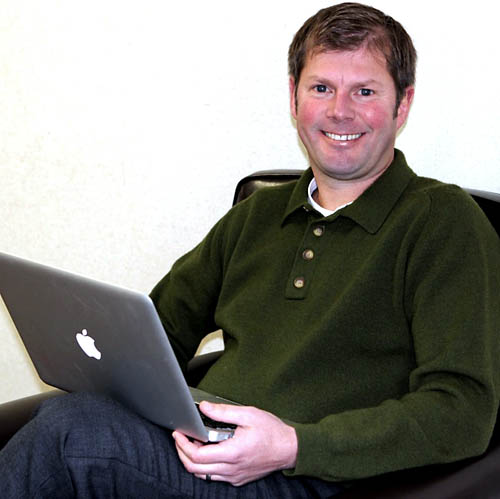home | internet service | web design | business directory | bulletin board | advertise | events calendar | contact | weather | cams

|
Aiming Toward Better Six months into his job, the Methow Valley School District’s new superintendent, Tom Venable, has just finished a series of community listening sessions, classroom visits and individual meetings with every staff member in and out of classrooms. Now he’s ready to propose some changes. Venable, former deputy superintendent in the Bellingham School District, replaced Mark Wenzel, who resigned after five years to accept the superintendency at the Anacortes School District. What’s impressed him most about the school district he’s been put in charge of says Venable, “is just how much we are doing for our students in what is considered to be a small rural school district.”  Tom Venable, Methow Valley Superintendent of Schools. Tom Venable, Methow Valley Superintendent of Schools.School District 350 doesn’t quite fit the typical profile of a small rural district where more than 50 percent of students qualify for free or reduced school lunch, a federal marker of poverty. One of the reasons it's atypical, Venable notes— is because of the strong community support from the many organizations and individuals engaged in providing a rich learning experience for students in the Methow Valley. But because so many of the district’s families are struggling financially, Venable lists as one of his priorities reducing or eliminating fees students must pay for supplies, to take some courses and to participate in sports. “It’s my belief that it’s intended to be a free and appropriate education,” Venable says of the public education system. So the district will try to ascertain what it typically costs in fees for a family with two kids enrolled in the district’s schools. The goal is to find solutions that allow all kids to participate. “Those are equity issues,” he says. “We have an exceptionally talented staff that’s working very hard,” Venable says when asked for his impressions of the district so far. But he adds that he thinks teachers have found themselves “challenged by initiative fatigue” caused by a series of unfunded but required federal and state initiatives. These unfunded mandates have meant that in the past, the district had to “borrow against its reserves to maintain its programs,” Venable notes. He expects funding to be his top challenge as superintendent. This year the district has a $7.2 million operating budget, up from last year because there are 42 more students enrolled; the district now has 605 students. This year’s enrollment increase is spread across the grades, he adds. Among other near-term priorities for Venable is early childhood education, and the district is now focused on how children from birth to three years of age and how those between three to five years old are being served, Venable says. “The goal is to give every child access to high quality, early learning experience,” says Venable. Persuasive public financing reasons exist for doing so, he argues: for every $1 spent on early childhood education, $8 is saved in later remediation and intervention, according to Venable.
The goal should be to graduate not only academically competent but innovative, flexible, creative thinkers, Venable says, regardless of what line of work students eventually want to pursue. All students should graduate with the skills needed for immediate employment, vocational training, or a two or four-year college education, he says. Typically, 95 percent of the district’s students graduate from high school. “Our challenges are going to be about how to compete globally,” says Venable. Seventy-five percent of jobs that now exist will be replaced by technology in 25 years, Venable predicts. So he wants to put in place the long-term strategies that will mean today’s kindergartners in the Methow Valley School District will be able to function in the workforce when that day comes. A “cohesive program of study that is more aspirational” is one of his major priorities, says Venable. To that end, he has asked the staff to explore alternative ways to teach children that meet state and federal student academic competency mandates. As examples he points to the “Big Picture” school approach that’s being used in the Highline School District, or the International Baccalaureate model used in Bellingham. The faculty team that’s visiting school districts using these teaching models will report its findings in late January, says Venable. “What’s the type of student or graduate we’re hoping to develop?” should be the question that drives any instructional changes the district’s school directors may decide to adopt, Venable says. Once that question is answered, he says he hopes to get the entire K-12 program “aligned” to meet goals adopted by the district. 12/25/2013 Comments
|
 The Bremerton School District, for instance, found that it saved between $500,000 and $600,000 annually that it had been spending on struggling students after it started its early childhood education emphasis. “They’re eliminating the achievement gap before it begins,” says Venable. When he was working in the Bellingham School District, Venable was involved in establishing full day kindergarten there.
The Bremerton School District, for instance, found that it saved between $500,000 and $600,000 annually that it had been spending on struggling students after it started its early childhood education emphasis. “They’re eliminating the achievement gap before it begins,” says Venable. When he was working in the Bellingham School District, Venable was involved in establishing full day kindergarten there.